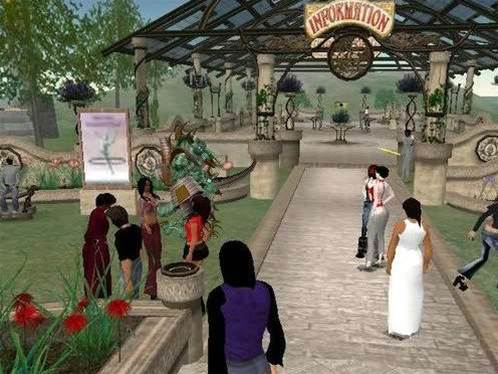
Abrahams said that at any given time, fewer than a couple of hundred Australians might be in Second Life.
But virtual worlds expert Gary Hayes said that virtual world ratings should be measured in engagement and user hours, not just hits.
“Immersive online experiences need new metrics, and marketeers and academics are realising that social worlds do provide the potential for very high dwell figures,” said Hayes.
“Facebook has 65 million users on for just four hours per month. 132 Americans watch YouTube but they watch only about five minutes per day or 2.5 hours per month,” said Hayes.
“Second Life (and other social virtual worlds) has the highest rates of loyalty and stickiness of any social network generation, more than 50 hours per month per user.”
Hayes said that Telstra’s islands, known as The Pond, had a steady stream of around 50-100 users at any given time.
Telstra spokesperson Peter Habib quoted figures compiled by The Project Factory which said that BigPond’s islands were the most popular in Second Life.
The Ponds were founded in March 2007 with 11 islands (now 16) which have hosted virtual concerts, ANZAC Day commemorations and even New Year and Australia Day events.
BigPond recently hosted an AUSTAFE event which involved live streaming of the event from Adelaide into Second Life.
The Ponds also contains five residential islands for users to build themselves virtual real estate to live in, at near 100 per cent occupancy.
Telstra spokesperson Peter Habib told iTnews, “BigPond’s commitment to innovation, interactivity and entertainment in Second Life is a key part of our success.”
Habib said that BigPond has opened a virtual in-world service kiosk that allows Second Life users to interact with BigPond customer service staff in a virtual way.
Hayes said that The Pond’s approach to customers differentiated it from many other brands.
“The real success of The Pond is more about the regular events, the creativity of the builders who often come from the community, elements of nationalism, and many of the organic spaces that promote stickiness by their ‘ambience’ rather than superficial interactivity. This has been a real differentiator.’Habib dismissed the concerns of other providers with success on Second Life.
“While other companies may not share BigPond’s successes, we are more than pleased with the popularity of our Second Life islands.”
Hayes said that companies might not succeed in Second Life for two reasons. First, that many brands were brought into Second Life for the wrong reasons, and with misunderstandings about the social network. “You cannot build into a social network and not be social,” said Hayes. “Early entrants simply did not act human; they acted like a corporation, and built clones of the real world, and didn’t think experientally.”
Second, Hayes said that companies needed to change their offering to virtual customers.
“We are seeing the natural exodus of ‘showroom, build-it-big-and-boring’ brands and the settling of second generation ‘social’ and ‘purposeful’ brands. So The Pond, Accenture, Playboy, The L Word, and about five other key brands are really getting to grips with setting up a virtual base in a social world.”
John Brand, research director at Hydrasight, agreed.
“Only organisations who want to be perceived as ‘bleeding edge’ should ever have been involved in Second Life in the first place,” said Brand.
“Now that Second Life is entering its relative teenage years (measured in Internet years at least), the early adopter bandwagon has well and truly been jumped on.”
But Brand noted that Second Life is not the only virtual world.
“There are at least 50 other mainstream entities and the total audience (according to a trusted site on this topic, KZero) is well over 300 million. In the second quarter of 2008, $161 million was invested in 14 virtual worlds, in the first quarter $184 million put into 23 virtual worlds, so the total this year alone is $345 million across 37 new worlds.
“Australia is a tiny market compared with Europe, Asia, South America and the USA, so fluctuations are highly likely. The fact that the user base of one virtual world fell by 23 per cent in a year is common with any service coming out of a hype phase into a stable mature phase.”


.png&h=140&w=231&c=1&s=0)

_(20).jpg&h=140&w=231&c=1&s=0)





 iTnews Executive Retreat - Security Leaders Edition
iTnews Executive Retreat - Security Leaders Edition












_(1).jpg&h=140&w=231&c=1&s=0)



